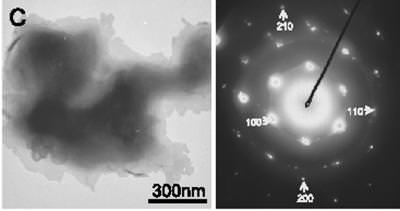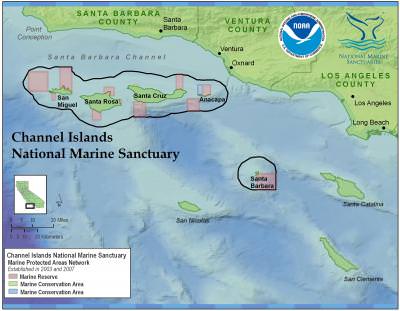[/caption]
Archeologists have been divided about whether an extraterrestiral impact blasted North America about 12,900 years ago, wreaking havoc on Earth’s surface and sending scores of species — including a pygmy mammoth and the horse — into oblivion.
New clues from California’s Channel Islands should put any doubt to rest, says an international team of researchers.

The 17-member team, led by University of Oregon archaeologist Douglas J. Kennett, has found what may be the smoking gun.
The team has found shock-synthesized hexagonal diamonds in 12,900-year-old sediments on the Northern Channel Islands off the southern California coast.
The tiny diamonds and diamond clusters were buried deeply below four meters (13 feet) of sediment. They date to the end of Clovis — a Paleoindian culture long thought to be North America’s first human inhabitants. The nano-sized diamonds were pulled from Arlington Canyon on the island of Santa Rosa, which had once been joined with three other Northern Channel Islands in a landmass known as Santarosae.
The diamonds were found in association with soot that forms in extremely hot fires, and they suggest associated regional wildfires, based on nearby environmental records.
Such soot and diamonds are rare in the geological record. They were found in sediment dating to massive asteroid impacts 65 million years ago in a layer widely known as the K-T Boundary. The thin layer of iridium-and-quartz-rich sediment dates to the transition of the Cretaceous and Tertiary periods, which mark the end of the Mesozoic Era and the beginning of the Cenozoic Era.
“The type of diamond we have found — Lonsdaleite — is a shock-synthesized mineral defined by its hexagonal crystalline structure. It forms under very high temperatures and pressures consistent with a cosmic impact,” Kennett said. “These diamonds have only been found thus far in meteorites and impact craters on Earth and appear to be the strongest indicator yet of a significant cosmic impact [during Clovis].”
The age of this event also matches the extinction of the pygmy mammoth on the Northern Channel Islands, as well as numerous other North American mammals, including the horse, which Europeans later reintroduced. In all, an estimated 35 mammal and 19 bird genera became extinct near the end of the Pleistocene with some of them occurring very close in time to the proposed cosmic impact, first reported in October 2007 in PNAS.
Source: University of Oregon, via Eurekalert. The results appear in a paper online ahead of print in the Proceedings of the National Academy of Sciences.


Now THAT, is an interesting story! HO!
Kudos, that was a much more balanced (and informative for a layman) report of the context than other media has presented.
[I.e. they are implying wholesale extinction of megafauna and humans, while a modicum of googling reveals resent research arguing that is a debatable idea.]
This new information is fascinating! It is perhaps unfortunate that it takes such a long time for new data to be peer reviewed and accepted by the scientific community, but that’s the way we keep the integrity of our understanding the universe intact.
Of course, MUCH of what has been already been accepted can be argued to be incomplete after further studies are made.
Regardless… I personally have found ash deposits here in Northern California embedded in the strata along the coast. I’d like to collect some of that material and have it looked at for nano diamonds.
Does anyone know where I might send such samples for analysis?
I remember reading a story about two years ago about how it might have been a comet-sized chunk of supernova remnant:
http://www.lbl.gov/Science-Articles/Archive/NSD-mammoth-extinction.html
Seems to make sense to me, but I’m nowhere near an expert.
Nice article.
And I like the link provided by “AngryScott”, too. The 41,000 year-old and 34,000 year-old events being related to a supernova seem plausible, but a comet made of supernova debris from 250 light years away being the impactor’s source 13,000 years ago seems a little far-out.
I don’t see how the comet material would coalesce from high-speed and diverging SNR material. The comet would have to have traveled around 1600 miles per second to cover the 250 light years in 28,000 years, too. That would be one high-speed meteor!!!
Again though, very interesting articles. I enjoy learning about attempts to unravel these historical mysteries.
Larry